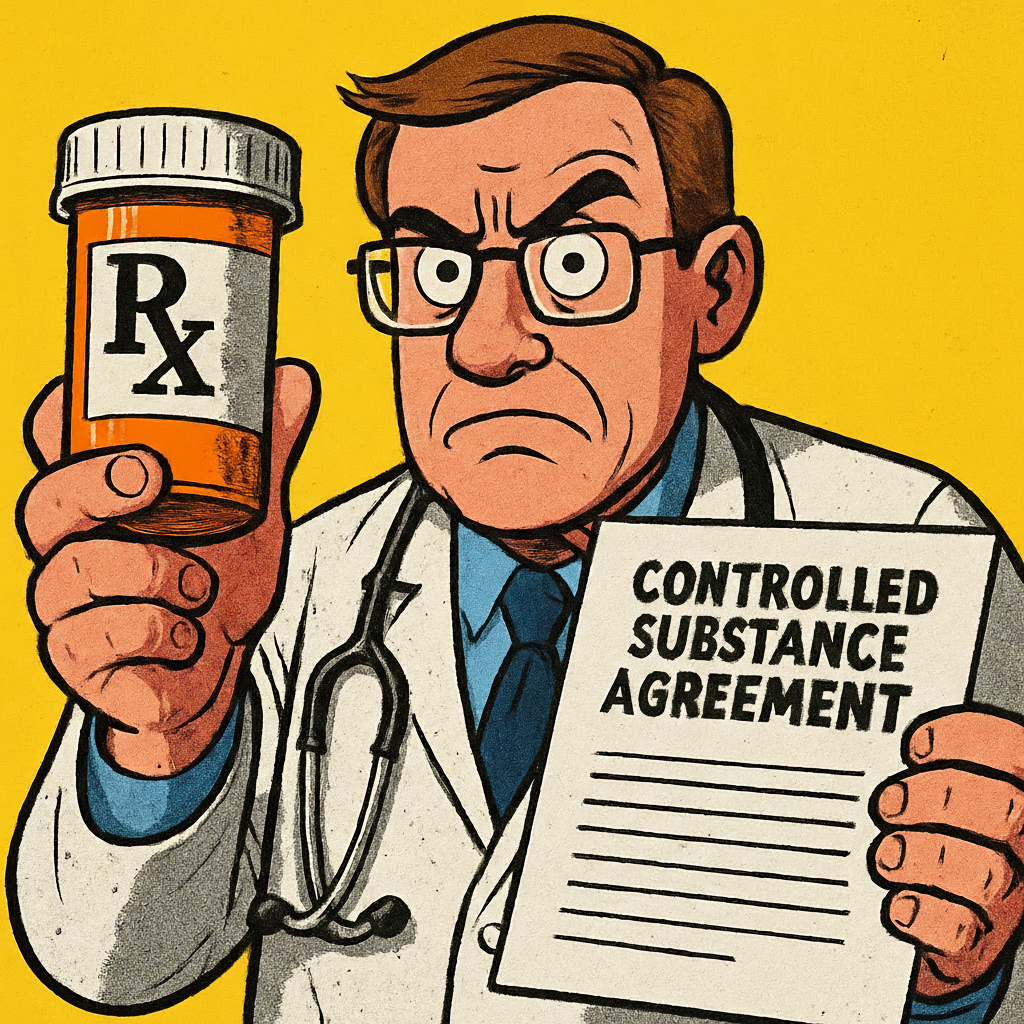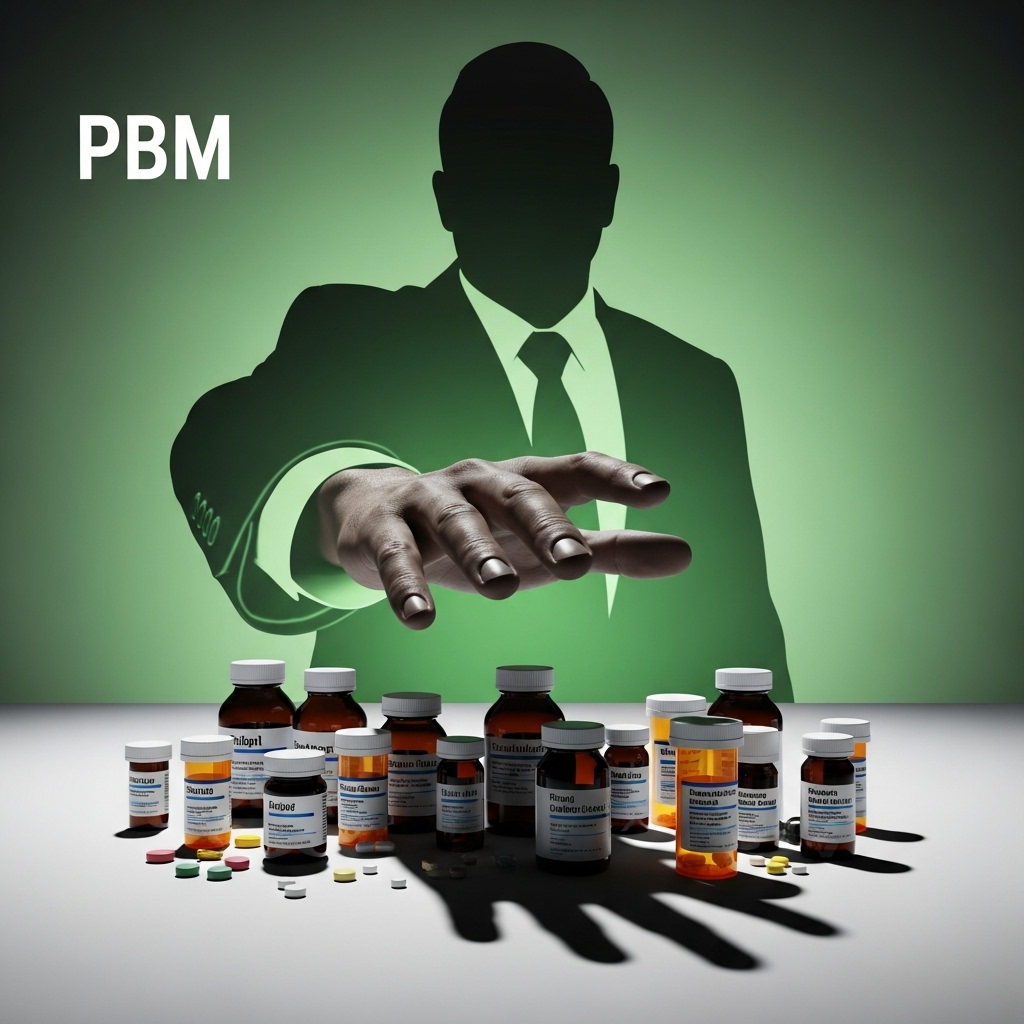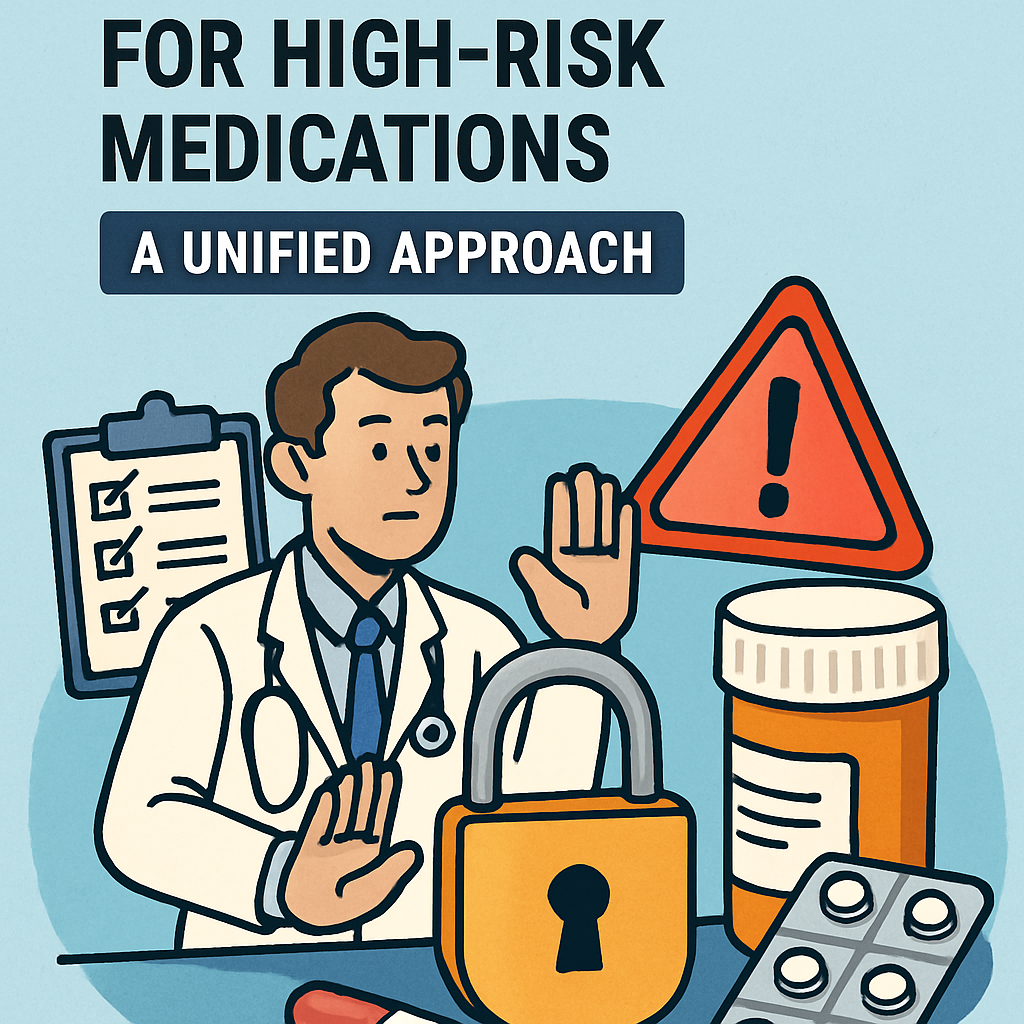
Introduction: Trust, Transparency, and Accountability in Controlled Substance Prescribing
Prescribing controlled substances is high-risk due to patient safety, provider liability, and regulatory compliance concerns. A well-implemented Controlled Substance Agreement (CSA) is crucial, protecting both provider and patient by establishing a framework for responsible use and mitigating harm.
What Exactly Constitutes a Controlled Substance Agreement?
A Controlled Substance Agreement (CSA) is a formal, written document that requires the explicit signatures of both the prescribing healthcare provider and the patient. Its primary purpose is to clearly delineate the parameters governing the prescription of controlled substances. Specifically, a CSA outlines three crucial aspects:
- The specific conditions under which controlled substances will be prescribed. This includes the medical necessity, the duration of therapy, and any other relevant clinical stipulations.
- The responsibilities of both parties, detailing the obligations of the prescriber (e.g., proper monitoring, adherence to guidelines) and the patient (e.g., adherence to dosage, communication of concerns).
- The clearly defined consequences that will ensue if those responsibilities are not met by either party. These consequences can range from discontinuation of the medication to referral for specialized care, depending on the nature of the violation.
Common elements universally incorporated into a robust CSA include, but are not limited to:
- Strict adherence to the prescribed dosing schedule: This emphasizes the importance of taking medication exactly as directed to ensure efficacy and minimize risk.
- Absolute prohibition of sharing, selling, or misusing medication: This is a critical clause to prevent diversion, protect others, and ensure the patient’s own safety.
- Agreement to periodic, unannounced or scheduled drug testing: This serves as a vital monitoring tool to confirm appropriate medication use and detect the presence of unprescribed substances.
- Requirement to use a single, designated pharmacy: This helps to consolidate prescription records, facilitate monitoring, and prevent “pharmacy shopping” for multiple prescriptions.
- Mandatory compliance with Prescription Monitoring Program (PMP) checks: These database checks allow providers to review a patient’s controlled substance prescription history across different prescribers, identifying potential risks such as polypharmacy or diversion attempts.
The Indisputable Reasons Why CSAs Are Essential
The implementation of CSAs is not merely a recommendation; it is an essential component of responsible controlled substance management, offering substantial benefits across multiple domains:
1. Comprehensive Risk Mitigation for Healthcare Providers
For healthcare providers, CSAs serve as a crucial shield against various professional and legal vulnerabilities:
- Establishes a documented baseline of informed consent: The signed agreement demonstrates that the patient has been thoroughly educated on the risks, benefits, and responsibilities associated with controlled substance therapy, thereby establishing a clear record of informed consent.
- Demonstrates proactive compliance with DEA and state regulations: In an increasingly scrutinized regulatory environment, a well-executed CSA provides tangible evidence of a provider’s commitment to adhering to federal Drug Enforcement Administration (DEA) guidelines and specific state laws concerning controlled substances. This proactive approach can be invaluable in the event of an audit or investigation.
- Provides robust protection against claims of negligent prescribing: Should a patient misuse medication or suffer adverse outcomes, the CSA serves as a documented defense, proving that the provider established clear boundaries, educated the patient, and put safeguards in place to prevent such occurrences.
2. Enhances Clarity and Understanding for Patients
From the patient’s perspective, CSAs, when presented appropriately, can significantly improve the therapeutic relationship:
- Sets clear, unambiguous expectations for medication use: Patients understand precisely what is required of them, minimizing confusion and reducing the likelihood of unintentional non-compliance. This clarity empowers patients to take an active role in their treatment.
- Outlines monitoring procedures upfront to avoid misunderstandings: By explaining procedures like drug testing or PMP checks in advance, the CSA prevents surprises and potential feelings of distrust, fostering a more transparent and collaborative relationship.
- Reinforces the inherent seriousness and responsibility of controlled substance therapy: The formal nature of the agreement underscores the potency and potential risks associated with these medications, prompting patients to approach their treatment with the necessary seriousness and adherence.
3. Ensures Critical Regulatory Compliance
The regulatory landscape surrounding controlled substances is dynamic and stringent. CSAs play a pivotal role in navigating this complexity:
- Many states now strongly recommend or even mandate the use of CSAs for specific high-risk medications. This is particularly true for opioids, which are under intense scrutiny due to the ongoing opioid crisis, but also extends to benzodiazepines and stimulants, given their potential for abuse and diversion. Adherence to these state-specific requirements is not optional for providers.
The Integral Role of CSAs in Comprehensive Controlled Substance Management
CSAs are most effective not as standalone documents but as integral components of a broader, multi-faceted risk mitigation strategy. They work synergistically with other critical tools to ensure patient safety and regulatory adherence:
- Prescription Monitoring Programs (PMPs): These state-level databases provide a comprehensive history of controlled substance prescriptions dispensed to a patient. Checking PMPs before prescribing allows providers to identify potential “doctor shopping,” concurrent opioid and benzodiazepine use, or other red flags. The CSA reinforces the patient’s agreement to these checks.
- Urine Drug Testing (UDT): Regular UDTs serve as an objective measure to confirm appropriate medication use (e.g., presence of prescribed medication, absence of illicit substances or unprescribed medications) and to monitor for diversion or misuse. The CSA legitimizes and mandates this testing.
- Pill Counts: Periodically requiring patients to present their remaining medication for a physical count helps to detect diversion, under-dosing, or over-dosing. While not always feasible for all medications, it’s a valuable tool for high-risk scenarios, and the CSA can outline this expectation.
- Regular Follow-Up Visits: Frequent and consistent follow-up appointments are crucial to assess the ongoing appropriateness of controlled substance therapy. These visits allow providers to evaluate pain or symptom relief, monitor for side effects, reassess risk factors, and reinforce the terms of the CSA.
Common Pitfalls and How to Avoid Them
While CSAs are powerful tools, their efficacy can be undermined by common missteps. Providers must be vigilant to avoid these pitfalls:
- Adopting a “One-Size-Fits-All” Language: A generic CSA may not adequately address the nuances of different drug classes, patient conditions, or individual risk profiles. Agreements should be tailored or at least adaptable to reflect the specific medication (e.g., long-term opioid for chronic pain versus short-term benzodiazepine for acute anxiety), the patient’s unique medical history, and their assessed risk for misuse or diversion.
- Failure to Review in Person with the Patient: Simply handing a patient a CSA to sign is insufficient. Providers should dedicate time to walk patients through every clause of the agreement, explaining the rationale behind each condition and answering any questions. This ensures genuine understanding and fosters patient buy-in.
- Lack of Consistent Follow-Through and Enforcement: The CSA loses all credibility if violations are not addressed consistently. If a patient violates a term of the agreement (e.g., failed drug test, refusal of pill count, obtaining medication from another provider), the provider must address it according to the pre-established consequences. Selective or lenient enforcement undermines the agreement’s purpose and can expose the provider to greater risk.
Critical Legal and Ethical Considerations
It is paramount to recognize that a CSA is a supportive instrument; it does not replace sound clinical judgment. Providers must never use a CSA as a defensive “shield” to rationalize or justify poor prescribing habits or inadequate patient monitoring. Instead, the CSA should operate within a framework of ethical and responsible medical practice. This includes:
- Thoroughly documenting the clinical rationale for initiating and continuing controlled substance therapy. This documentation should clearly explain the medical necessity, alternative treatments considered, and the expected outcomes.
- Routinely reassessing the risks and benefits of controlled substance therapy at each patient visit. This is an ongoing process, as patient conditions and risk factors can change over time.
- Involving multidisciplinary care teams when needed, especially in complex cases. This may include referrals to pain specialists, addictionologists, mental health professionals, or physical therapists, ensuring a holistic approach to patient care.
Navigating Patient Perception and Enhancing Communication
Some patients may initially perceive CSAs as punitive, feeling that the agreement implies a lack of trust or that they are being singled out. How the agreement is introduced and framed is critical to overcoming this initial apprehension:
- Position the agreement explicitly as a collaborative partnership for safety. Emphasize that the CSA is a tool designed to protect the patient from potential harms (e.g., adverse drug interactions, accidental overdose, addiction) and to ensure they receive the safest and most effective care.
- Stress that the overarching goal is to protect their health and ensure continuity of care. By agreeing to the terms, patients help the provider ensure that they can continue to receive necessary medication responsibly, without interruption due to safety concerns or regulatory issues.
- **Highlight that CSAs play a crucial role in preserving patient access to legitimate treatment
Controlled Substance Agreements (CSAs) are vital tools for healthcare providers when prescribing controlled substances, a high-risk activity due to patient safety, liability, and regulatory compliance. A CSA is a formal, written document signed by both provider and patient, outlining conditions for prescribing, responsibilities of both parties, and consequences for non-compliance.
Key elements of a CSA include strict adherence to dosing, prohibition of sharing or misuse, agreement to drug testing, using a single pharmacy, and mandatory Prescription Monitoring Program (PMP) checks.
CSAs are essential for:
- Risk Mitigation for Providers: Establishing informed consent, demonstrating compliance with DEA and state regulations, and protecting against claims of negligent prescribing.
- Patient Clarity and Understanding: Setting clear expectations for medication use, outlining monitoring procedures, and reinforcing the seriousness of controlled substance therapy.
- Regulatory Compliance: Meeting state recommendations or mandates, especially for high-risk medications like opioids.
CSAs are most effective as part of a broader strategy, working with PMPs, Urine Drug Testing (UDT), pill counts, and regular follow-up visits.
Providers should avoid pitfalls like “one-size-fits-all” language, failure to review the CSA in person with the patient, and inconsistent enforcement.
Legally and ethically, a CSA supports, but doesn’t replace, sound clinical judgment. Providers must document clinical rationale, reassess risks/benefits, and involve multidisciplinary teams.
To manage patient perception, introduce CSAs as collaborative partnerships for safety, emphasizing their role in protecting health and ensuring continuity of care, and preserving access to legitimate treatment.
Final Thoughts: A Simple Step with Big Impact
A Controlled Substance Agreement, when implemented thoughtfully, is one of the most effective tools for balancing patient access to necessary medications with provider protection against regulatory and legal risks.
In the era of heightened scrutiny, the CSA is less a piece of paper and more a shared commitment to safe, responsible care.
About the Author
Douglas J. Jorgensen, DO, CPC, FAAO, FACOFP
Dr. Doug is a physician, consultant, and national educator on healthcare policy, compliance, and controlled substance risk mitigation. He helps practices develop prescribing protocols that meet both clinical and regulatory standards.


